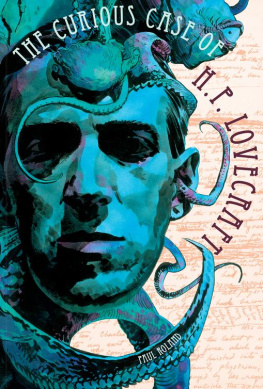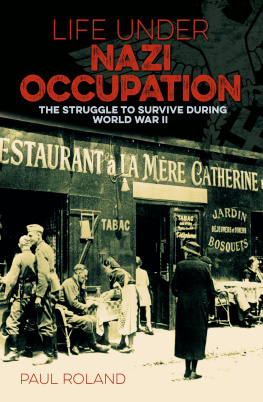
INTRODUCTION
A QUESTION OF EVIL
T his book differs from most conventional histories of the Third Reich in that it argues that the Nazi state was more than a sociopolitical phenomenon. Instead, it was the manifestation of its Fhrers fatally flawed personality.
Sadistic criminals, serial killers and brutal dictators are routinely referred to as evil and Adolf Hitler is often cited as the personification of the malevolent spirit manifest in man. But malicious spirits are a creation of the primitive, irrational mind. Common sense contends that evil is entirely man-made, that it is a deliberate, wilful act by individuals who seek satisfaction in destruction out of sheer spite and a lack of empathy for their victims.
We may not believe in the devil these days, but we continue to demonize dictators so that we are not forced to see them for what they really are a shadow of ourselves, the embodiment of our darkest fears, a reflection of what we could become if we abandoned the conventional rules of conduct and indulged our basest instincts.
Some historians argue that Hitler was an aberration, the product of a violent, unstable era in European history that could only have come about in the aftermath of the First World War. They seek to reassure us that the milieu from which he emerged was a form of collective shell shock that is unlikely to occur again. There will always be tinpot dictators throwing their weight around, suppressing their own people and threatening their neighbours, they say, but Hitler and Uncle Joe Stalin, his equally bloodthirsty ally, were the last in a line of conquerors going all the way back to Genghis Khan. These historians would have us believe that such men will be an anathema in the 21st century.
The same academics have suggested that the Nazi Partys rise to power was exclusively due to sociopolitical factors. But it is the purpose of this book to present the argument that Hitler did not wage war solely to avenge Germanys humiliating defeat in 1918. It will be shown that his insatiable appetite for conquest was not driven by territorial ambition alone nor by the desire to restore German honour and pride. Instead, the former Austrian corporal was consumed by the belief that divine Providence had entrusted him with a sacred mission, which was to subjugate all inferior races and eradicate the Jews from the face of the earth.
Hitler created and nurtured a climate of suspicion, fear and deceit which pitted his own ministers against each other. He hoped that they would be too occupied with squabbling amongst themselves to plot against their Fhrer. But once the initial euphoria of swift and easy victory over France and the Low Countries had died down, and the reality of a protracted war with Russia filtered through, the German people woke up to the fact that they were living in a fascist police state. Anyone with a grudge could anonymously inform on a family member, friend or neighbour. They knew that their suspicions would be ruthlessly acted upon by the Gestapo, who routinely resorted to torture to extract a confession. Such conditions are not created by a unique combination of random historical events. Nazi Germany was one mans nightmare made manifest.
So if we are to understand how the Third Reich came into being and why the German people worshipped Hitler as their saviour, even as their cities crumbled around them in the last days of 1945 it is necessary to appreciate what kind of a mind conceived the Nazi state.

Line of conquerors: Genghis Khan, Stalin and Hitler, but what drove them to desire mastery over others?
THE MIND OF ADOLF HITLER
Hitler was a neurotic, unstable, paranoid personality whose infamous rages were a manifestation of his malignant narcissism and megalomania which prohibited anyone from questioning his authority. Malignant narcissism is a comparatively common psychosis exhibited by violent criminals and tyrants who have a distorted view of reality and have failed to develop a sense of morality. The core components of malignant narcissism are pathological self-absorption, antisocial behaviour, a persecution complex and unconstrained aggression.
One of the characteristics of pathological narcissists is a lack of empathy for others. Unable to feel genuine emotion, they fake it by mimicking the facial expressions and language of those around them. Such people are psychologically unstable because they suffer from identity diffusion, which boils down to the fact that they dont have a real sense of self. Instead, they exhibit aspects of themselves as if playing a role. They have not completed the process of integration which characterizes healthy individuals whose self-image is formed from interaction with others.
The chameleon-like character of pathological narcissists betrays the fact that they are merely acting out the role that they consider suitable to their situation. Their condition typically manifests as over-confidence and self-absorption, to a degree that makes them incapable of empathizing with others. This lack of empathy desensitizes them to such an extent that they can commit violent acts without any sense of guilt.
Malignant narcissists are devoid of conscience and are driven by self-interest. Their amorality can lead them to exploit the beliefs and convictions of others in order to consolidate their own power. They are not deterred by the threat of punishment or retribution, which makes them resistant to condemnation, censure and in the case of tyrants economic sanctions. Only the threat of force can deter them, because it forces them to question their belief in their own supremacy.
According to leading American political psychologist Aubrey Immelman, the malignant narcissist harbours a siege mentality behind his grandiose facade.

The eyes have it: few of those who met Adolf Hitler could escape his penetrating gaze
They are insular, project their own hostilities on to others, and fail to recognize their own role in creating foes. These real or imagined enemies, in turn, are used to justify their own aggression against others. Malignant narcissists are cold, ruthless, sadistic, and cynically calculating, yet skilled at concealing their aggressive intent behind a public mask of civility or idealistic concern.
THE RIGHT MAN
Hitler was what is known in clinical psychology as a right man: that is, someone who stubbornly believes himself to be in the right at all times and cannot even conceive that his perspective may be distorted or that someone else may have a valid opinion. It is said that such people would cut off their nose to spite their face. Such blinkered perception and stubbornness proved an asset in Hitlers early days, because his fanaticism was focused on a single objective. But such an intensely blinkered view, when allied to inflexibility, can only lead to inner conflict and ultimately to psychological disintegration and self-destruction.
Hitler could not accept defeat and when it came he ranted and raged that he would drag the nation down with him, because the German people were evidently unworthy of the sacrifices he had made for them. His solution to all problems was to use threats and violence. He was devoid of conscience and had no conception of morality. Conscience, he said, was a Jewish invention and therefore it was the duty of the Germans to distrust it and free themselves of the dirty and degrading [idea of] conscience and morality.
Next page















